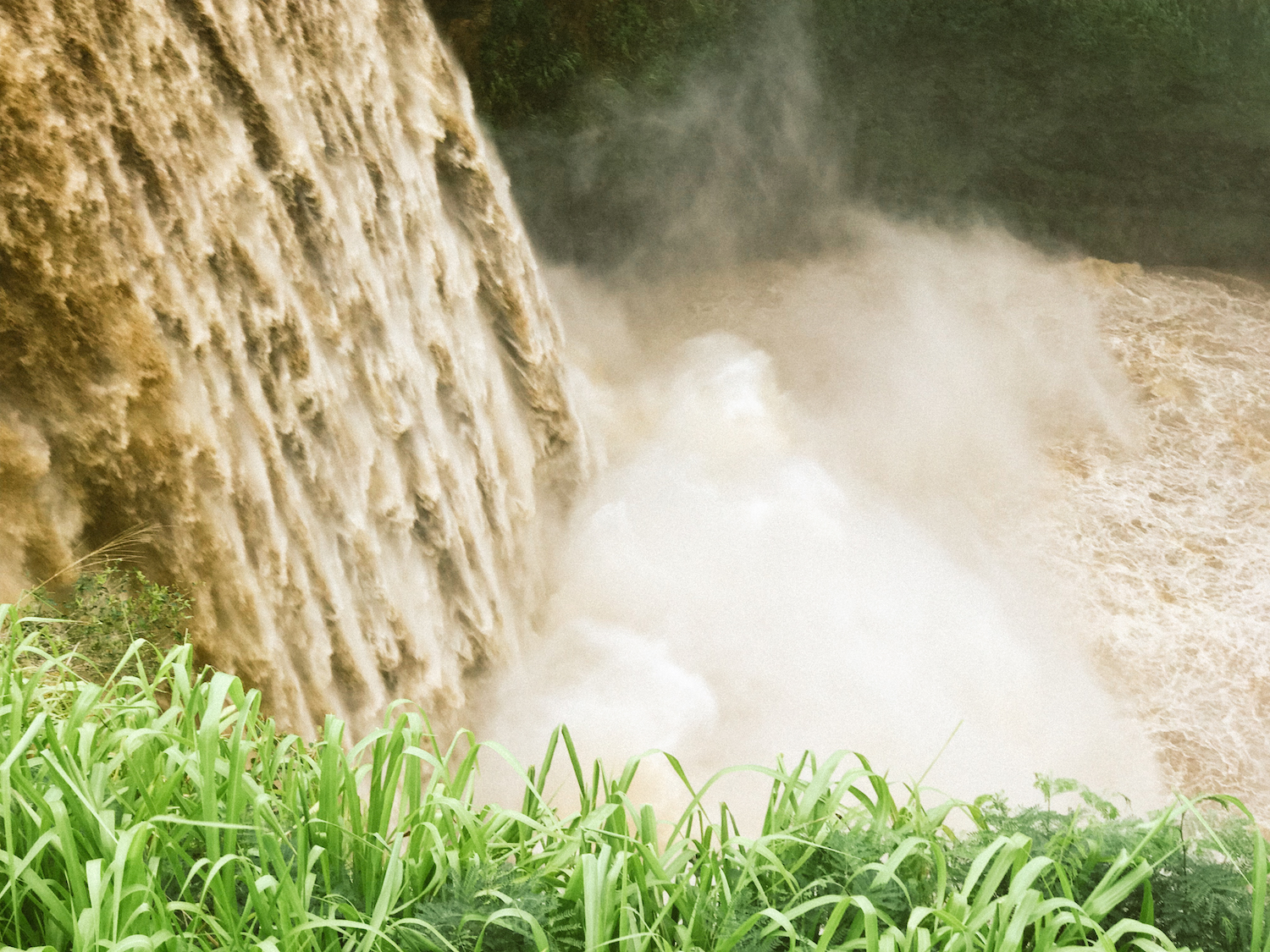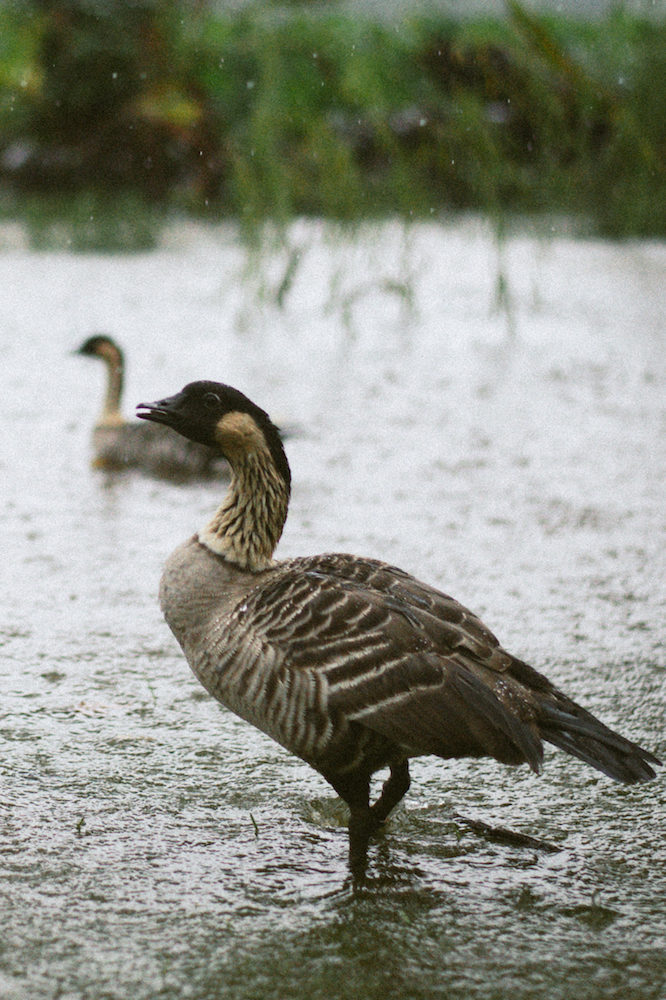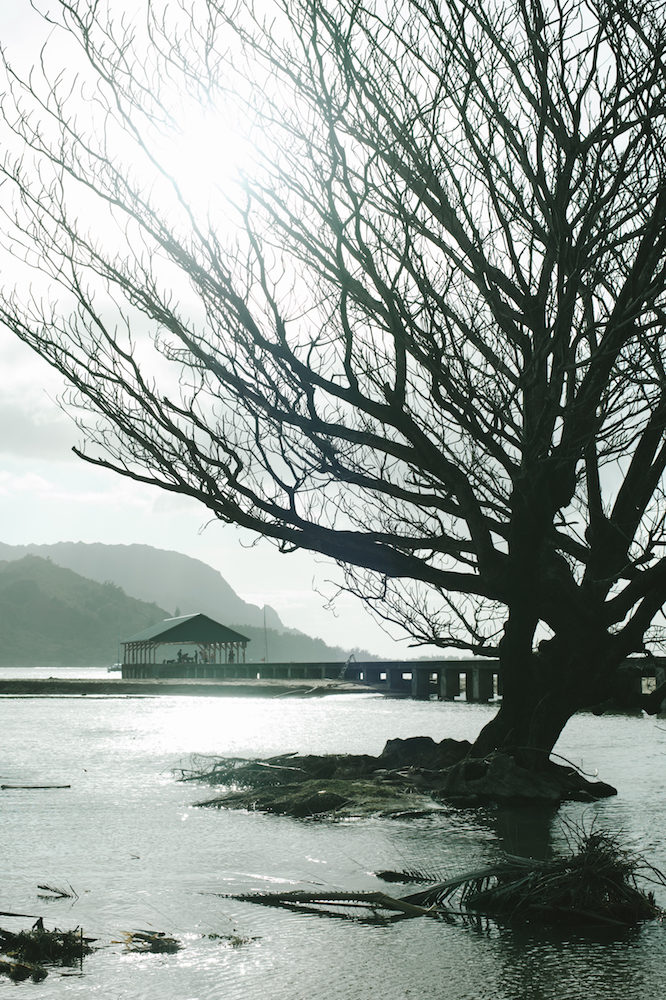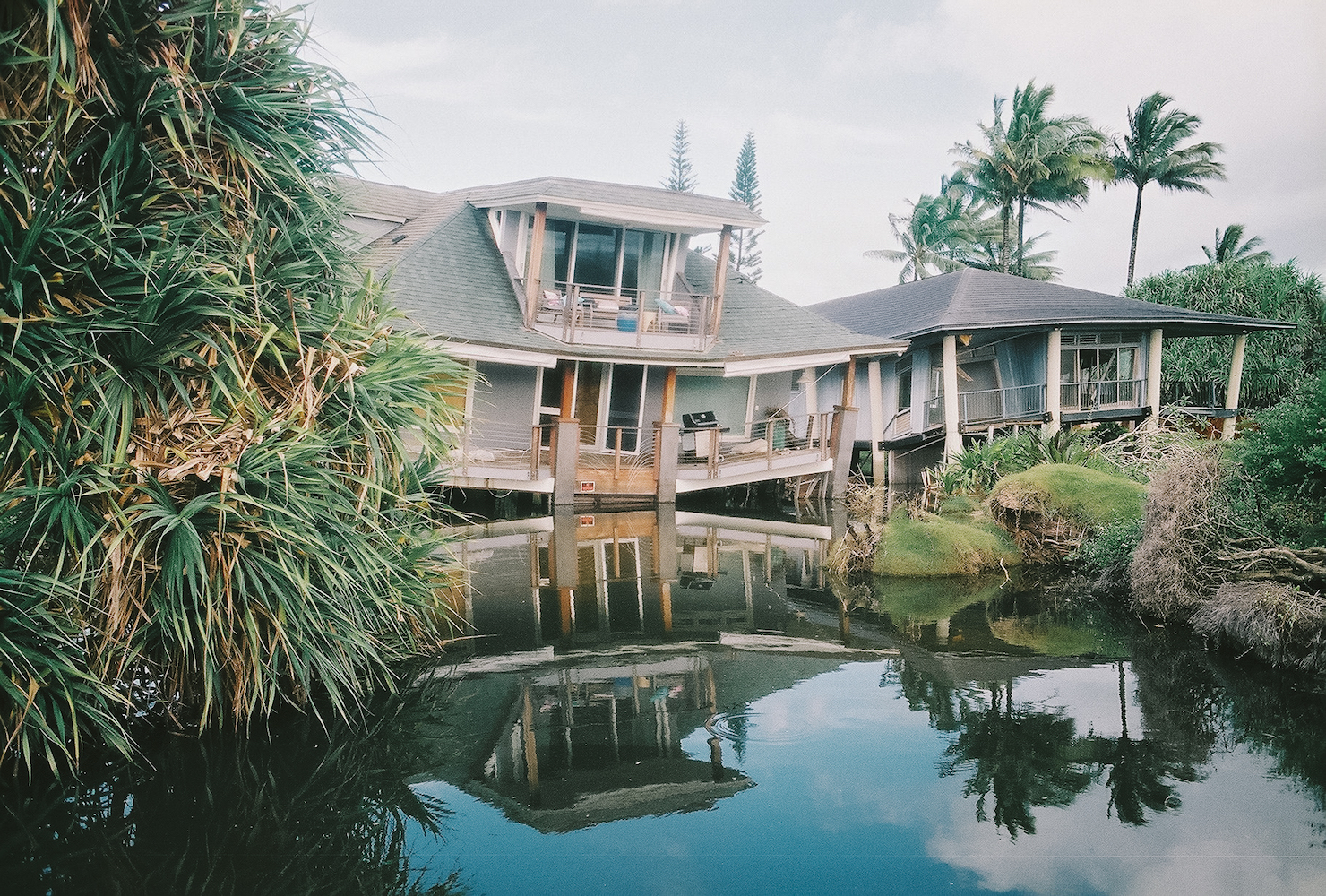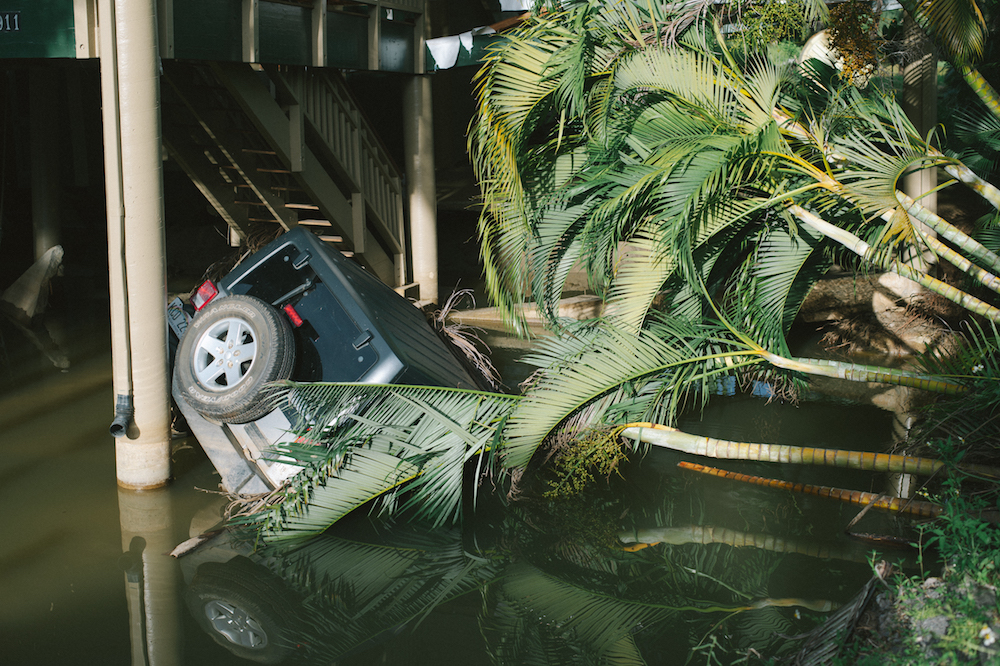Home to one of the wettest places in the world, Kaua‘i is blessed with an overabundance of rainfall. But the people who live there also know how unstoppable and destructive water can be.
Growing up on Kaua‘i, water was all we knew. Every free second we had we spent playing in the tossing shore break at Lumaha‘i Beach, swimming in the frigid waters of cold ponds, or kayaking up a river to a waterfall.
The water was always there, and always on our minds. At Hanalei Elementary School, every kid was obsessed with the surf and everyone constantly sketched perfect waves on school notebooks.
Rain, floods, and landslides were also part of life growing up on Kaua‘i. I spent the night at my best friend’s house in Wainiha Valley every Wednesday, and the drive there, which took us over steep ridges on narrow two-lane roads with no guard rails, gave me recurring nightmares about landslides taking us over the edge.
We would be free from school for weeks at a time when the typically placid Hanalei River would swell with the heavy rains of Mount Wai‘ale‘ale and spill over its banks, covering the road and even the bridge that connected Hanalei with the rest of Kaua‘i.
These small natural disasters were normal, and we relished them. We shared the same insight as Hemingway in For Whom the Bell Tolls: “This was a big storm and he might as well enjoy it. It was ruining everything, but you might as well enjoy it.”
The change a storm brought, those moments of uncertainty and unknowing were exciting and different, and they brought an element of danger to our everyday, idyllic life.
Then came Hurricane Iniki, in 1992. Kaua‘i was demolished, and my life was never the same.
My family lived in a small condominium, and in the second half of the hurricane, the roof of a nearby tower flew right into our condo. We were in the bathroom, and death missed us by only inches. I could tell you of other storms after that hurricane, about the time we saw ball lightning rolling around in the yard of our off-the-grid home in Pila‘a, about when my uncle was lost at sea, about what it’s like to see a steadfast and strong coconut tree break out of the ground and fly in the air and the aquamarine blue of swimming pools transform into a deep green, about encountering massive sinkholes that opened in the middle of the road and swallowed swathes of asphalt.
Childhood Memories
But these childhood memories could never prepare me for the destructive power of water that the people of Kaua‘i were yet to witness.
In mid-April 2018, I was an enjoying warm, sunny day on the west side of Kaua‘i. Sitting in the shade of my brother’s garage, I absentmindedly checked Instagram and saw the live feed of my friend Timothy Hamilton, who works at an upriver Hanalei tour boat yard on the island’s lush north shore. What he was broadcasting shocked me: Hanalei River as wide as the Amazon, its distant shore shrouded in rain.
Tim continued to live-stream through the morning, first from the boat yard and then from the mouth of Hanalei River.
Floodwaters inched over the banks, up to his heels. Then, over the next hour, the water surged to head-high and reached as wide as a football field, washing away everything in its path.
Tim filmed as he clung precariously to an areca palm to avoid being swept away in a deluge of foaming, chocolate-brown river water.
Then, out of the maelstrom, a jet ski raced up to him. Tim reached out, and the ski delivered him to safety.

On that day, the rain-saturated rivers and streams of Hanalei and Wainiha poured over their banks, flooding to levels beyond what anyone could remember. A rain gauge measured nearly 50 inches of rainfall in a 24-hour period, a world record.
The raging rainwater soaked the land, causing landslides that moved homes off their foundations, undermined roads and buried them with red dirt. Early on April 15, determined to help, I set out for Princeville, a resort town sitting high on a plateau overlooking flood-ravaged Hanalei to the west. The road into Hanalei was closed by a police blockade, with officers in their blue uniforms waving traffic back and away from the destruction zone.
I walked around to a side entrance. Even at Princeville, far above the low-lying flood plain of Hanalei, the extreme rain had broken the road in places. One section I had crossed countless times on my way to Foodland as a child was completely washed away, a gaping sore in the otherwise smooth roadway.
Making my way to the east bank of the Hanalei River, I came upon a flow of evacuees from the populated valleys of Hanalei, Wainiha, and Hā‘ena who had been rescued by boat and ski. Huge hands of green bananas, cans of gasoline, bottles of water, and other supplies packed by volunteers were piled up on the shore. Among them was a group of campers who had fled from the famous Kalalau Valley.
Kalalau Trail
The Kalalau Trail is renowned as a beautiful hike, but also as one of the world’s most dangerous. They had traversed this precarious trail to Hā‘ena after the storm’s rains lifted and then made their way down flooded Kūhiō Highway to Hanalei.
They recounted hiking through wash-outs on a narrow, slippery trail carved into a pali thousands of feet above the ocean, one slip away from a deadly plummet. They told of arriving back to civilization at abandoned Kē‘ē Beach, utterly in shock as they encountered apocalyptic scenes of downed telephone poles and abandoned vehicles littering the roads.
I flagged down a friend on a jet ski. He dropped me upriver on a dock in the backyard of the home of big-wave surfer Laird Hamilton. The day before, Hamilton had tirelessly trekked up and down the river, rescuing people from second-story windows and delivering food and water to stranded people in Wainiha.
A quarter-mile downriver, the home of retired longtime Hanalei boat captain and surfer Ralph Young lay in ruin, pushed aside effortlessly by a muddy landslide. The classic plantation-era home was nearly 100 feet from its foundation. The flood left behind a muddy outline of the house littered with his possessions. Ralph’s home lay peeled open like a tin can.
Exposed to the Elements
A hole torn in a wall revealed a beautifully renovated bathroom exposed to the elements. I joined in retrieving glass balls, surfboards, and memorabilia from the mud.
Then I caught passage on a boat headed west to Wainiha Valley, which along with its adjoining valleys were the most heavily flooded areas.
In earlier times, Wainiha was a kalo-farming valley, the longest-lasting on Kaua‘i. The waters of Wainiha, which make it prime for wetland taro farming, flow from the table-top plateau of Mount Waiʻaleʻale, which is about 4,000 feet above sea level, and then pass through the valley on a 14-mile path to the Pacific Ocean.
Rock walls were strategically erected to turn the wild waters of the stream into a precise irrigation system. Hawaiian planters at Wainiha fed a large population on taro, bananas, olonā, sweet potatoes, ‘awa, and noni. The name of the ahupua‘a translates to “angry waters” or “unfriendly waters,” perhaps a reference to both its flowing streams and its dangerous shoreline.

Growing up, I spent days with my best friend, Makana, exploring upper Wainiha Stream near his family home. We would wander barefoot under blue skies and brilliant sunlight through verdant fields, crossing streams by clinging to slippery stones. I remembered the dappled light filtered by the shade of overhanging choke plum trees, patches of light reflecting on the fast-moving mountain water.
Washed Away
We would catch Tahitian prawns with our hands and sometimes even manage to score a sucker-bellied, slimy o‘opu. Those pleasant days belied the extreme power of the Wainiha streams. In the aftermath of the flood, I barely recognized the valley.
Homes, brand new Toyota Tacoma trucks, and the possessions of entire lives were washed away on April 14.
The flood forever transformed the landscape and the lives of families who were now bereft of houses, of dry clothes, of drinkable water, of any of the typical comforts we take for granted.
Returning to the beaches of Hanalei, the verdant mountain backdrop stood in stark contrast to the dilapidated and collapsing flooded luxury homes that sell for double-digit millions along its coast. These mansions, twisted and waterlogged, stood in testament to the arrogance of man. Houses built upon sand had collapsed as the land under their foundations was swept away. I saw wrecked vehicles and pieces of once vainly glorious homes degrading into standing water and sediment. Walking through Black Pot Beach Park was the most shocking. I had spent so much of my youth at this beach. I had been jumping off its pier for as long as I could remember, and relieving myself in its always sandy public restroom for just as long. I still have a scar on my back from being slammed into the parking lot’s ironwood hedge on my 14th birthday. Now this landscape that I had considered fixed and permanent, somewhere I could always relive my childhood exploits, was irrevocably transformed. Water had consumed the land around the pier, and the restroom lay squished on the ground nearly eight feet lower than where it was originally. Looking down into its ruins and seeing tilapia swimming around a sink where I had washed my hands for more than 30 years gave me the strangest feeling, one I can only describe as cognitive dissonance.

A flood tears everything apart. It also brings everything together and creates renewal and growth in the wake of its destructive path. Nine days after the flood, the townspeople of Wainiha, Hanalei, and Ha‘ena gathered at Hanalei Colony Resort to discuss plans for ongoing rescue and aid efforts and how to move forward. There still wasn’t enough drinking water. Standing water throughout Wainiha contained disease-carrying microbes. Officials from the Department of Health and other government agencies took turns sharing their instructions and guidance.
People, justifiably exhausted and frustrated, still managed to smile at one another across the room. Many people had lost their homes and were unable to work but remained cool and neighborly. A haunting mele had begun the town meeting, and its ethereal melody engendered thoughts of the countless generations who had come before, of Hawaiians traveling on foot and by canoe to meet around kūpuna who offered advice and support for kama‘āina who were just as traumatized by the storms of ancient Hawai‘i.
Darker Side of Nature
The gentle and nourishing rain and waters of Kaua‘i had shown their darker side, a destructive force, unstoppable and unknowable. But they also revealed unlikely heroes. Talitha Byram, general manager of Hanalei Big Save, and her staff of two worked a 56-hour shift to keep residents and tourists fed and comfortable while they were trapped in Hanalei. The Robinson family landed a barge with supplies and Polaris UTVs for residents to navigate the transformed landscape. Volunteers immediately brought in excavators and worked to remove the debris from 12 landslides that blocked the roads. Water, that substance that we use so much of and think of so little, showed its true power to destroy and divide, but also to dissolve the barriers between landowner and resident, tourist and shopkeeper, kānaka maoli and haole.
Floods will come again. There will be storms and wind, lightning and rain. Way out in the Pacific, our islands are the most remote in the world, completely exposed to the powerful forces of nature. Everything can change in an instant, and if we remain inflexible, we will be washed away just as easily as tears in the rain.

—
E ui aku ana au iā ‘oe
Aia i hea ka wai a Kāne?
Aia i lalo, i ka honua, i ka wai hū
I ka wai kau a Kāne me Kanaloa
He waipuna, he wai e inu
He wai e mana, he wai e ola
He ola nō, ea!
One question I ask of you
Where flows the water of Kāne?
Deep in the ground, in the gushing spring
In the ducts of Kāne and Kanaloa,
A well-spring of water, a water to quaff
A water of power, the water of life!
Life! Long may it live!
— “He Mele No Kāne”

